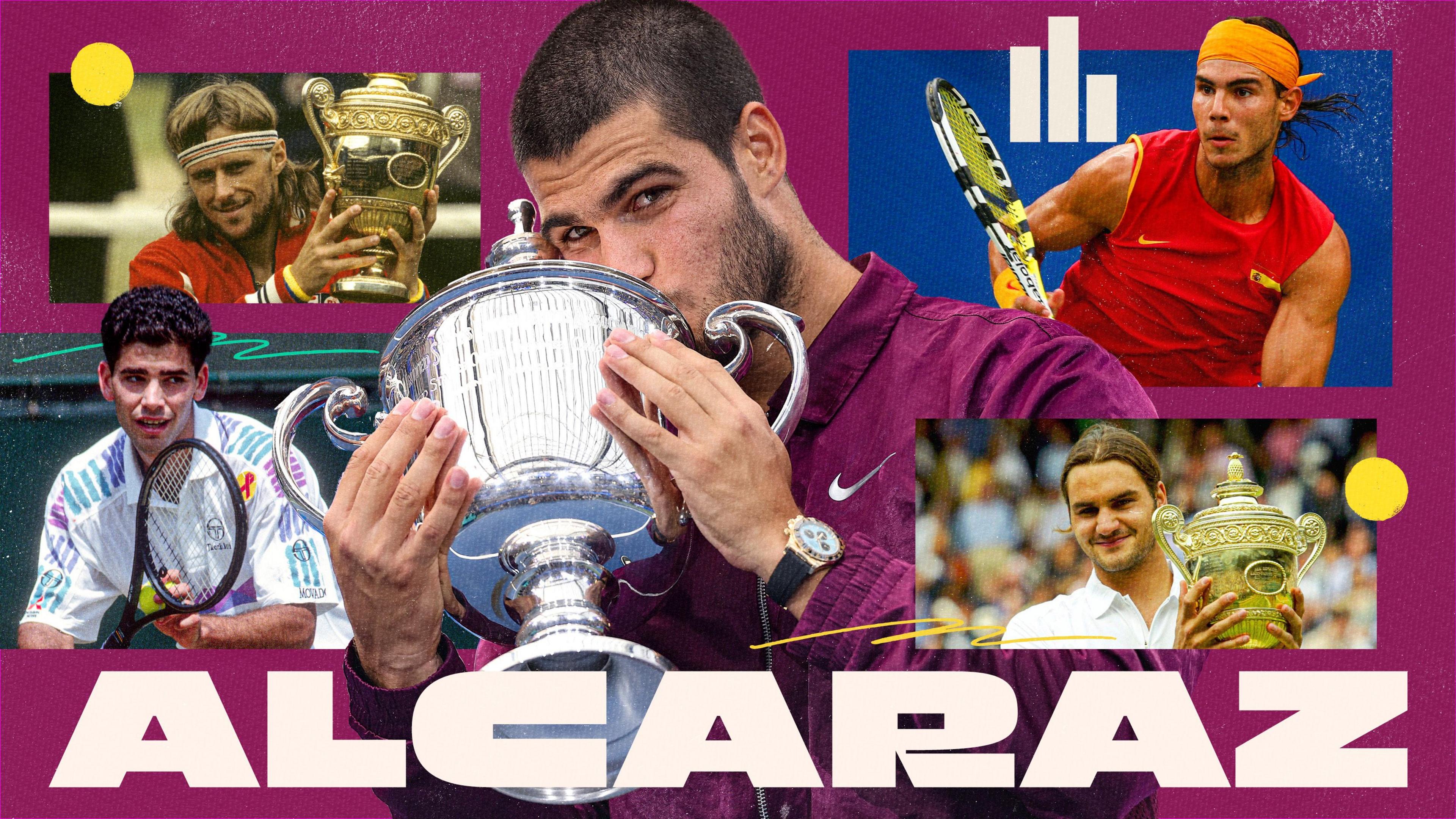'Playing perfectly' - how does Carlos Alcaraz rank vs tennis legends at 22?
When Carlos Alcaraz won his sixth Grand Slam title on Sunday, he did so by thoroughly outclassing the world's number one player in probably the best performance of his career so far.
Defending US Open champion Jannik Sinner - whose record on hard courts over the past two seasons is among the most imperious of any player on any surface in tennis history - was induced into a timid display in which he was overawed by the Spaniard.
The quality of Alcaraz's performance in his 6-2 3-6 6-1 6-4 victory led to something of an existential crisis in Sinner, who insisted afterwards that he needs to revamp game in order match Alcaraz's level.
For his part, Alcaraz believes he is reaching new heights.
I played perfectly, he said after lifting the trophy. This is the best tournament so far that I have ever played. The consistency of my level has been really, really high - it's something I've been working on.
At age 22, Alcaraz is already talked about among the sport's greatest ever players. But just how well does he rank against them so far?
BBC Sport has examined how he compares against the men's game's legends at the same stage of their careers.
Speed and surface mastery put Alcaraz on a pedestal already
Since Alcaraz joined the ATP Tour as a 16-year-old, he has been lauded for the variety of his play, being able to combine cutting low slices with ferocious forehands and deft drop shots to consistently catch opponents off guard and win points in breathtaking ways.
But his ability to stitch together that kind all-around quality on any surface is what is already setting him apart from anybody else.
Alcaraz has now won two Grand Slams on each of the hard, grass, and clay surfaces – only Rafael Nadal, Mats Wilander, and Novak Djokovic have ever achieved the same feat in the men's game.
The speed at which Alcaraz is racking up the majors is astonishing, too - he has taken only 18 tournaments to win six slams, equalling the record set by Bjorn Borg in 1978.
Only Borg has won six slams at a younger age than Alcaraz, doing so by winning three on clay at Roland Garros and three on grass at Wimbledon.
At 22 Nadal also had six (but won the last of those when he was a few months older than Alcaraz), while Pete Sampras was on five, and Wilander four.
The likes of eight-time Wimbledon winner Roger Federer and 24-time Grand Slam champion Djokovic were way behind the pace of Alcaraz at his age.
Serve supremacy takes game to new level
Alcaraz's serve has never been a weakness, but he rendered it one of his most irrepressible weapons in New York by increasing his power to levels he has never before shown.
Against Sinner he served a stunning ten aces, raising his average serve speed from 113mph to 120mph between his opening round victory against Reilly Opelka and the final.
During the tournament Alcaraz won 84 percent of his first-serve points and 63 percent on his second-serve, both higher than anybody else in the tournament, and hit the fastest serve of any player during the final, clocking a whopping 134mph.
The set Alcaraz lost in the latest final was the only one he dropped in the entire tournament, and the three breaks of serve he suffered during the fortnight are the second-lowest in Grand Slams since 1991.
Most impressively of all, the measly 10 break points he faced during the fortnight are the lowest of any Grand Slam winner since 1991.
How could Alcaraz improve from here?
Despite his glowing review of his own performance at Flushing Meadows, Alcaraz still believes he has a way to go before he reaches his pinnacle.
At 22-years-old, it's difficult to already be at your maximum level, he said after demolishing Sinner. Little by little I'll keep improving to try and get there.
The best Carlos hasn't come out yet.
Aside from terrifying the rest of the Tour, that statement begs a big question - how exactly can Alcaraz possibly improve from here?
It's true that the Spaniard remains prone to occasional bouts of erratic shot-making during high-level matches, sometimes succumbing to half-an-hour or so spells in which his touch and depth appear to desert him.
Indeed, in the set he lost to Sunday on Sinner, Alcaraz made 11 unforced errors, compared to only two each in the previous and following sets.
Cutting those periods out could be a way to maintain his peak ruthlessness and restrict the chance for top quality opponents to gain a foothold in matches.
And if the improvement in the serve is anything to go by, perhaps Alcaraz could even add further development to some of the already immensely impressive skills he possesses.
No matter how he develops his game and how many more majors he wins from here, Alcaraz has already demonstrated that he is among the very best players the sport has known. Fans around the world can now watch and see whether, by the end of his career, he is lauded as the undisputed greatest ever.





















